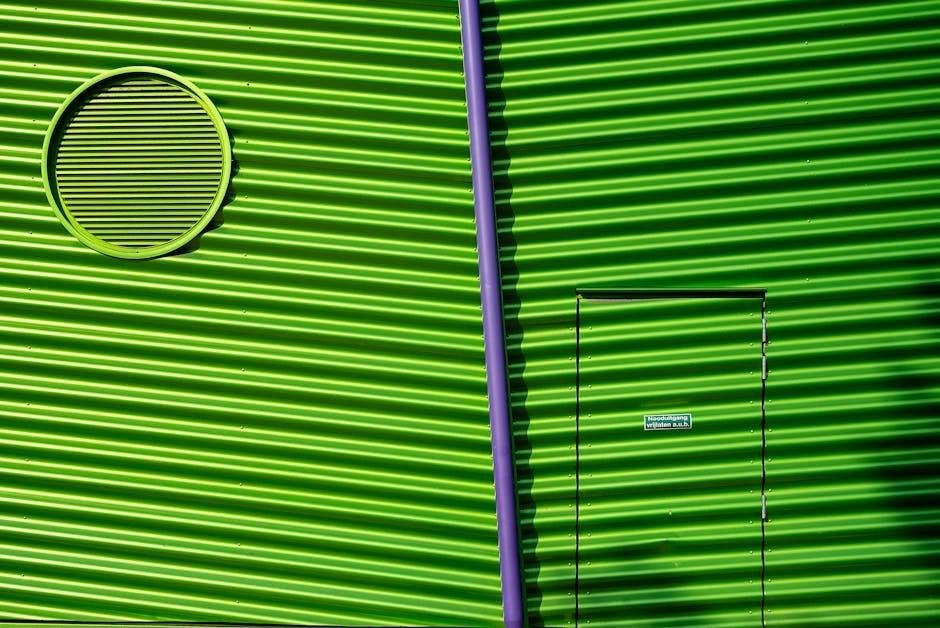Gum shade guides are essential tools for matching denture base colors with natural gum tissue, ensuring aesthetic harmony and patient satisfaction. These guides provide standardized shade options, enabling precise selection for realistic and personalized denture outcomes.
1.1 Overview of Gum Shade Guides
Gum shade guides are standardized tools used to select the appropriate color for the denture base, mimicking the natural appearance of gingival tissue. These guides typically consist of a series of shade tabs representing various hues, from light to dark, allowing for precise matching. They are designed to ensure the denture base blends seamlessly with the patient’s natural gum color, enhancing aesthetics and realism. Standard guides, such as the Vita Classical Shade Guide, categorize colors into groups, while custom solutions may offer additional options. The use of gum shade guides ensures consistency and accuracy in achieving a natural-looking prosthetic outcome, addressing both functional and aesthetic needs effectively.
1.2 Historical Development of Gum Shade Guides
The development of gum shade guides traces back to early dental prosthetics, where achieving natural aesthetics was challenging. Initially, dentists relied on manual tinting and trial-and-error methods. The mid-20th century saw the introduction of standardized shade guides, with companies like Vita pioneering systems that categorized gingival colors. These tools revolutionized denture fabrication by providing reproducible and consistent shade selection. Over time, advancements in materials and digital dentistry further refined gum shade guides, offering more precise and customizable options. Today, these guides are indispensable in modern denture fabrication, combining traditional methods with innovative technologies to enhance aesthetic outcomes and patient satisfaction.
Understanding Gum Shades in Dentures
Gum shades mimic the natural color and texture of gingival tissue, ensuring dentures blend seamlessly with the patient’s mouth for a lifelike appearance and enhanced aesthetics.
2.1 Components of Gum Shades
Gum shades are composed of pigments, resins, and opaquers that mimic natural gingival tissue. They include base colors, modifiers, and translucency levels to achieve realistic hues and textures. Standard systems like Vita and custom kits offer varied options, ensuring personalized matches for diverse patient needs. These components are carefully formulated to replicate the natural appearance of gums, from light pink to darker tones, and are applied using layering techniques for a lifelike finish.
2.2 Natural Gum Color Variations
Natural gum color variations range from light pink to darker tones, influenced by factors like health, ethnicity, and individual characteristics. These variations necessitate precise matching in dentures to achieve a natural appearance. Standard guides categorize these hues into distinct shades, aiding in accurate replication. Layering techniques are used to mimic natural gum colors, ensuring each denture is unique and aesthetically pleasing. This attention to detail is crucial for creating prosthetics that blend seamlessly with a patient’s natural tissue, enhancing overall satisfaction and confidence.

Importance of Matching Gum Shades
Matching gum shades ensures aesthetic harmony and psychological satisfaction, enhancing the natural appearance of dentures and boosting patient confidence in their smile and overall oral aesthetics.
3.1 Aesthetic Considerations
Matching gum shades is vital for achieving a natural, aesthetically pleasing appearance in dentures. Proper gum shade selection ensures the denture base blends seamlessly with the patient’s natural gum tissue, creating a harmonious smile. A mismatched gum shade can draw unwanted attention, while a well-matched shade enhances the overall realism of the dentures. This attention to detail boosts patient confidence and satisfaction, as the dentures appear more like natural teeth and gums. Aesthetic considerations also involve customization, as individual variations in gum color and texture can be replicated to avoid a uniform, artificial look. This personalization contributes to a more lifelike and attractive dental restoration.
3.2 Psychological Impact of Proper Gum Shade Matching
Proper gum shade matching significantly impacts a patient’s psychological well-being and self-perception. When dentures blend naturally with the surrounding tissues, patients often experience increased confidence and self-esteem. A harmonious match reduces self-consciousness about the appearance of artificial teeth and gums, fostering a positive self-image. Conversely, mismatched gum shades can lead to embarrassment or dissatisfaction, affecting a patient’s willingness to smile or engage socially. The emotional and psychological benefits of natural-looking dentures contribute to overall patient satisfaction and quality of life. Addressing aesthetic concerns through precise gum shade matching helps patients feel more comfortable and assured in their daily interactions and social environments.
Tools for Gum Shade Selection
Gum shade selection tools include standard guides, digital apps, and custom kits, aiding in precise color matching for natural-looking dentures and patient satisfaction.
4.1 Standard Gum Shade Guides
Standard gum shade guides are widely used tools for selecting denture base colors, offering a range of predefined shades to match natural gum tissue. These guides typically include several shade tabs, such as GOO (lightest), GO (light), G1 (standard), G3 (medium), G4 (dark), and G5 (darkest), providing options to suit various patient needs. They are designed to simulate the natural color variations of gingiva, ensuring a realistic and aesthetic match. By referencing these guides, clinicians can easily identify the most suitable shade for the denture base, enhancing the overall appearance and patient satisfaction. These tools are indispensable in dental prosthetics, offering a reliable and efficient way to achieve natural-looking results.
4.2 Digital Tools for Gum Shade Matching
Digital tools for gum shade matching have revolutionized the process of selecting denture base colors, offering enhanced accuracy and efficiency. These tools utilize advanced technology, such as digital cameras and specialized software, to capture and analyze the patient’s gum tissue color. They provide real-time shade matching, enabling precise selection from a vast library of shades. Some systems allow for the creation of custom shade profiles, ensuring personalized results. Digital tools also facilitate better communication between clinicians and dental technicians, reducing errors and improving outcomes. By leveraging technology, these tools contribute to more natural-looking dentures, enhancing both aesthetics and patient satisfaction. Their use is increasingly popular in modern dental practices.
4.3 Custom Shade Kits
Custom shade kits are specialized tools designed to create personalized gum shades for dentures, offering unparalleled precision and flexibility. These kits typically include a range of pigments, resins, and stains that can be mixed to match the unique color and texture of a patient’s gum tissue. They allow clinicians to craft highly individualized shades, ensuring a more natural and aesthetically pleasing result. Custom shade kits are particularly useful for patients with complex or unusual gum coloration. By enabling layering and blending techniques, these kits help achieve a realistic transition between the denture base and the surrounding tissue. Their versatility makes them indispensable for both full and partial dentures, as well as implant-supported restorations. This approach enhances patient satisfaction by delivering tailored solutions.
Process of Selecting Gum Shades
The process involves an initial assessment of the patient’s gum color, followed by consultation and final shade matching using guides, ensuring a natural and personalized fit.
5.1 Initial Assessment and Consultation
The initial assessment involves evaluating the patient’s natural gum color, considering factors like skin tone and tooth shade. During consultation, preferences and expectations are discussed to tailor the shade selection, ensuring a harmonious and aesthetically pleasing outcome for the dentures.
5.2 Final Shade Matching and Approval
The final shade matching involves applying the selected gum shade to the denture base and verifying its aesthetic compatibility. This stage ensures the chosen shade complements the patient’s natural appearance. A try-in process allows the dentist to assess the shade in the patient’s mouth, making any necessary adjustments. The goal is to achieve a seamless blend between the artificial gums and the patient’s surrounding tissue. Once satisfied, the patient approves the shade, confirming the final outcome. This step is crucial for ensuring patient satisfaction and a natural, realistic result. Proper communication between the dentist and technician is essential to achieve the desired aesthetic harmony. Final approval ensures the denture meets the patient’s expectations.

Factors Influencing Gum Shade Selection
Factors include patient preferences, skin tone, hair color, and clinical aspects like gum tissue condition and denture base material, ensuring a personalized and realistic gum shade match.
6.1 Patient-Related Factors
Patient-related factors significantly influence gum shade selection, including skin tone, hair color, and natural gum color. These elements help create a harmonious aesthetic match. Additionally, patient preferences and psychological expectations play a crucial role in achieving satisfaction. Age and ethnic background may also guide shade choices, as natural gum hues vary among individuals. For instance, younger patients might prefer lighter shades, while darker shades align with older patients or specific ethnic characteristics. These personal and biological factors ensure that the selected gum shade aligns with the patient’s overall appearance, enhancing both aesthetics and confidence in their denture outcome. Proper consideration of these aspects is vital for a natural-looking result.
6.2 Clinical and Technical Factors
Clinical and technical factors play a crucial role in gum shade selection for dentures. The type of denture, whether partial or complete, influences the shade choice to ensure compatibility with existing teeth and surrounding tissues. The fabrication method, such as conventional or digital techniques, also impacts the final shade outcome. Additionally, the condition of the patient’s oral cavity, including the health and color of residual tissues, must be considered. The dentist’s expertise and the availability of specific tools or guides in the clinic further shape the decision-making process. Proper communication between clinicians and technicians ensures accurate shade reproduction, while lighting conditions in the clinical setting can affect color perception. These factors collectively ensure a technically sound and aesthetically pleasing result.

Customization of Gum Shades
Customization of gum shades involves creating personalized aesthetics to match individual patient needs, ensuring natural-looking dentures. Advanced tools and techniques enable tailored solutions for unique oral conditions and preferences.
7.1 Techniques for Custom Gum Shade Creation
Custom gum shade creation involves advanced techniques to achieve personalized aesthetics. Hand painting allows for precise color layering, while staining enhances realism. Digital tools enable accurate shade matching, and composite resins offer durability. These methods ensure natural-looking dentures tailored to individual patient needs, improving both appearance and comfort. Proper customization considers factors like gum tissue color, tooth shade, and overall oral aesthetics. Techniques may also include layering for depth and blending to mimic natural transitions. By combining artistry and technology, custom gum shade creation enhances patient satisfaction and restores confidence in their smile. Each technique is carefully applied to ensure a seamless integration with the patient’s natural oral environment.
7.2 Materials Used in Custom Gum Shade Applications
Various materials are utilized in custom gum shade applications to achieve natural aesthetics and durability. Acrylic resins are commonly used for denture bases, offering flexibility and compatibility with gum shades. Composite resins are employed for detailed layering and blending, mimicking natural gum tissue. Silicone-based materials provide soft tissue-like texture, enhancing comfort. Pigments and stains are applied to customize color, ensuring a precise match. Additionally, light-curing composites are used for precise shade reproduction. These materials are chosen for their biocompatibility, longevity, and ability to replicate the appearance and feel of natural gums. The selection of materials depends on the patient’s specific needs, ensuring both aesthetic and functional outcomes.
Application of Gum Shades in Dentures
Gum shades are applied using tinting and staining techniques to simulate natural gum color. Layering and blending methods enhance realism, ensuring a visually appealing and personalized denture outcome.
8.1 Tinting and Staining Techniques
Tinting and staining are essential techniques for achieving natural gum color in dentures. These methods allow for customization beyond standard shade guides, ensuring a personalized match. Stains or resins are applied to the denture base to simulate the patient’s natural gingival color, creating a realistic appearance. The process involves layering thin coats of stain and blending them to avoid harsh lines or uneven tones. This technique is particularly useful for patients with unique gum pigmentation or those requiring additional characterization. Advanced materials, like light-curing composites, are also used for precise color replication. Proper tinting and staining enhance the aesthetic appeal of dentures, making them look more lifelike and natural.
8.2 Layering and Blending for Realism
Layering and blending are advanced techniques used to achieve highly realistic gum color transitions in dentures. By applying multiple thin layers of tinted resins or composites, technicians can mimic the natural gradation of gum tissue. Blending ensures seamless transitions between shades, eliminating harsh lines or abrupt color changes. These methods are particularly effective for creating nuanced, lifelike outcomes that match the patient’s unique gum characteristics. Layering also allows for subtle depth and dimension, enhancing the overall aesthetic appeal of the denture. When executed skillfully, these techniques result in dentures that appear incredibly natural, boosting patient confidence and satisfaction with their smile restoration.

Common Mistakes in Gum Shade Matching
Common mistakes include overlooking patient preferences and poor communication between clinicians and technicians, leading to mismatched gum shades and unrealistic denture aesthetics for patients.

9.1 Overlooking Patient Preferences
Overlooking patient preferences is a critical mistake in gum shade matching, as it disregards the individual’s aesthetic expectations. Patients often have personal opinions about gum color, influenced by factors like natural appearance, cultural perceptions, or desired aesthetics. Ignoring these preferences can result in dentures that lack a natural look, leading to patient dissatisfaction. Clinicians must actively involve patients in the shade selection process, ensuring their input is considered to achieve a harmonious and personalized outcome. Failing to do so can compromise the final result, making the dentures appear unnatural and unrelated to the patient’s unique characteristics. This oversight can also lead to repeated adjustments and a prolonged treatment process.
9.2 Inadequate Communication Between Clinicians and Technicians
Inadequate communication between clinicians and technicians is a common mistake that can lead to mismatched gum shades in dentures. Clinicians often select a shade based on their observation of the patient’s gum tissue, but without clear communication, technicians may interpret the shade differently. This miscommunication can result in a final product that does not match the intended aesthetic, causing patient dissatisfaction. Additionally, unclear instructions about the patient’s preferences or specific requirements can exacerbate the issue. Proper dialogue and the use of standardized shade guides are essential to ensure consistency and accuracy in gum shade matching. Poor communication can lead to remakes and extended treatment times, highlighting the importance of effective collaboration.

Maintenance of Gum Shades in Dentures
Regular cleaning with mild detergents and avoiding harsh chemicals helps preserve gum shade aesthetics. Professional check-ups ensure long-term color stability and integrity of the denture base.
10.1 Cleaning and Care Tips
Proper cleaning and care are crucial for maintaining gum shades in dentures. Use mild detergents and soft-bristle toothbrushes to avoid damaging the acrylic base. Avoid harsh chemicals, bleach, or abrasive products, as they can discolor or weaken the material. Rinse dentures thoroughly after meals to remove food particles. Soak dentures in a cleaning solution overnight to maintain hygiene. Store them in a protective case when not in use to prevent scratches. Regular professional cleanings can help preserve the gum shade aesthetics. Proper care ensures the longevity and natural appearance of the denture base, contributing to overall oral health and patient satisfaction.
10.2 Touch-Up and Repair Options
Touch-ups and repairs are essential for maintaining the appearance and functionality of dentures. Minor adjustments can be made using specialized resins or staining techniques to restore the gum shade’s natural look. For more extensive repairs, dentures may need to be relined or remade. Professional technicians can blend new materials seamlessly with the existing structure. Regular dental check-ups help identify issues early, preventing major repairs. Proper repair techniques ensure the longevity and aesthetic appeal of the dentures, maintaining both comfort and confidence for the patient. Regular maintenance and timely repairs are vital for preserving the gum shade’s integrity and overall denture performance.

Future Trends in Gum Shade Guides
Touch-ups and minor repairs can restore denture gum shades using specialized resins or staining techniques. Professional technicians ensure seamless blending, maintaining the natural appearance and durability of the dentures.
11.1 Advancements in Digital Dentistry
Digital dentistry is revolutionizing gum shade selection through advanced tools like 3D printing, CAD/CAM software, and digital shade matching systems. These technologies enable precise, consistent, and personalized gum shade reproduction, reducing human error. Digital shade guides offer real-time color matching, streamlining the process for clinicians. Additionally, AI-driven systems can predict optimal gum shades based on patient data, enhancing aesthetic outcomes. Virtual try-in and simulation tools allow patients to preview results, improving satisfaction. These innovations are expected to make gum shade selection faster, more accurate, and patient-centric, setting new standards in denture aesthetics and functionality.

11.2 Development of New Materials and Techniques
The development of new materials and techniques is transforming gum shade applications in dentures. Light-curing composites and advanced resin systems now offer greater durability and color stability. Innovations like translucent materials, such as Valplast, mimic natural gum tissue more accurately. Layering techniques with customizable tints enhance realism, while bio-inspired materials improve biocompatibility. Researchers are also exploring nanotechnology to create shade-stable, long-lasting gum shades. These advancements enable dentists to achieve more natural aesthetics and better patient satisfaction. Customization options are expanding, allowing for tailored solutions that address individual patient needs. Such developments are setting new benchmarks for the quality and aesthetics of denture gum shades.
